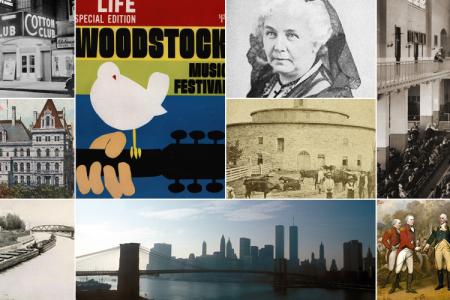A survey created by New York State Historian Devin Lander in partnership with Tompkins County Historian Carol Kammen was recently sent to all 62 County and 5 Borough Historians. The survey questions ranged in topics from the amount of time spent on activities, salary and budget, reasons for wanting the position, resources afforded to the County/Borough Historians and responsibilities of the position. Of the surveys sent out, there were 31 responses (28 County Historians and 3 Borough Historians) out of the 56 sent to counties that have a historian as well as to all 5 boroughs. The average number of years of service for the responding historians was 10.8 years, with a long tenure of 34 years and the shortest of 1 year. Some of the reasons these individuals expressed for originally wanting the position of historian can be attributed to an enthusiasm for local history and having prior experience in the field of history. Other reasons included a love of historical research and a desire to educate the public while preserving local history.
The average salary of the respondents is $20,722.32, with 87% of the responding historians being compensated for their work. Within this average, 32% (10) were considered full-time, 48% (15) part-time, 13% (4) volunteer, and 6% (2) contract. 32% (10) have full-time employment elsewhere and this includes a variety of work such as teaching, accounting, or working as a museum director or historical records manager. The average number of hours worked by all responding historains is 23.23 hours per week with full-time historians averaging 36.25 hours per week and part-time averaging 15.53 hours. 34% of respondents are given a budget outside of their salary with the average being $10,005 including a high budget of $46,413. and a low of $400. 58% percent of respondents were not given a job description at the time they began their service while, while 42% were.
The County Historians were also surveyed on their relationship with Local Government (town, village, and city) Historians serving within their county. Of the 28 County Historians who responded, the average number of Local Government Historians within their county was 23. An average of 3.19 annual meetings are convened by the County Historians with their Local Government Historians and the average attendance of these meetings is 11. The highest number of meetings convened was 12 and the lowest was 0.
The survey also asked for information on the resources provided to County/Borough Historians. 35% (11) of respondents are provided with support staff, 61% (19) are given an office, 68% (21) email, 61% (19) a computer, 58% (18) phone, and 71% (22) office supplies. Access to copying, faxing, and scanning is given to 68% (21) of respondents, and parking spots are provided to 48% (15). 52% (16) of respondents are given access to a website and 26% (8) to some variation of social media.
The next portion of the survey was concerned with duties and responsibilities of the County/Borough Historians. Most or all of the historians agreed that creating an annual report was their responsibility (94%), as well as responding to the public (100%), research and publication (100%), public education programming (90%), historic preservation activities (99%), and being a resource for Local Government Historians (90%). Activities like collections preservation and the coordinating of events, celebrations and anniversaries held slightly less of a consensus with 84% of historians declaring these as essential parts of their responsibilities. Fewer historians considered updating websites and social media as part of the duties of their position (39% and 42% respectively).
The survey also looked at how much time individual historians spent on various activities. The activity that had the most time spent on it was research and writing, with 47% of the historians surveyed ranking these activities as what they spent the most time doing. Other activities that ranked highly were: answering questions on family genealogy (6%), answering questions on buildings, roads and places (3%), giving walking tours (9%), conserving documents and collections (6%), public programming (22%), coordinating celebrations, events and anniversaries (3%), acting as a resource for other Local Government Historians (9%). School-age programming, historic preservation activities, website/social media, creating a newsletter, and responding to requests from County/Borough officials were not listed as taking the most time by any of the respondents.
Historians were also asked what their biggest challenges are, what would help them be a better historian, and how the State Historian can help. The most common challenges listed are the lack of time and budget provided to them, only having a part-time position, and a lack of support from local government officials. Having more time, money, and assistance was a common answer to what would help the respondents become better historians. Many asked for continued support from the State Historian, and expressed that training/development opportunities and increased interaction between County/Borough Historians and the State Historian would be welcome.
Survey Result Breakdown
Number of Responses: 31
Full-time: 32% (10)
Part-time: 48% (15)
Volunteer: 13% (4)
Contract: 6% (2)
Total Average Salary: $20,722.32
Full-time Average: $46,265.75
Highest: $60,000.00
Lowest: $3,000.00
Part-time Average: $8,777.00
Highest: $25,000.00
Lowest: $2,500.00
Average Years in Position: 10.8 years
Highest: 34.0 years
Lowest: 1.0 years
Average Budget Outside of Salary: $10,005.00
Highest: $46,413.00
Lowest: $400.00
Total Average Hours per Week: 23.23 hours
Full-time Average: 36.25 hours
Highest: 40.00 hours
Lowest: 15.00 hours
Part-time Average: 15.53 hours
Highest: 37.50 hours
Lowest: 8.00 hours
Provided with:
Support Staff: 35%
Office: 61%
Email: 68%
Computer: 61%
Website: 52%
Social Media: 26%
Phone: 58%
Office Supplies: 71%
Copy/fax/scan: 68%
Parking Spot: 48%
Average Number of Municipal Historians in County: 23
Highest:44
Lowest: 9
Average Number of Meetings Held per Year: 3.19
Highest: 12
Lowest: 0
Average Attendance at Meetings: 11
Highest: 30
Lowest: 1



